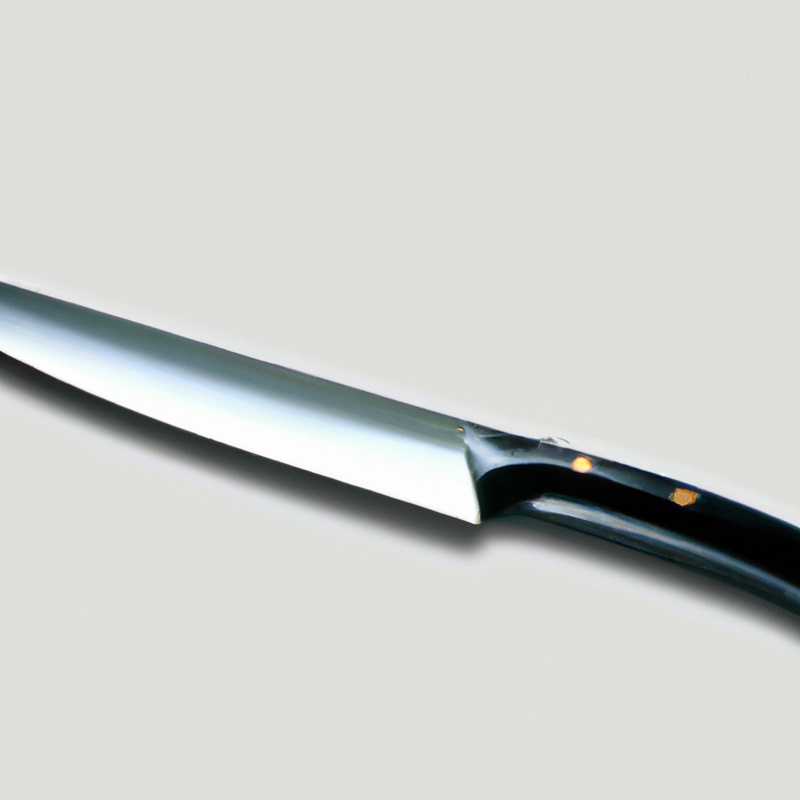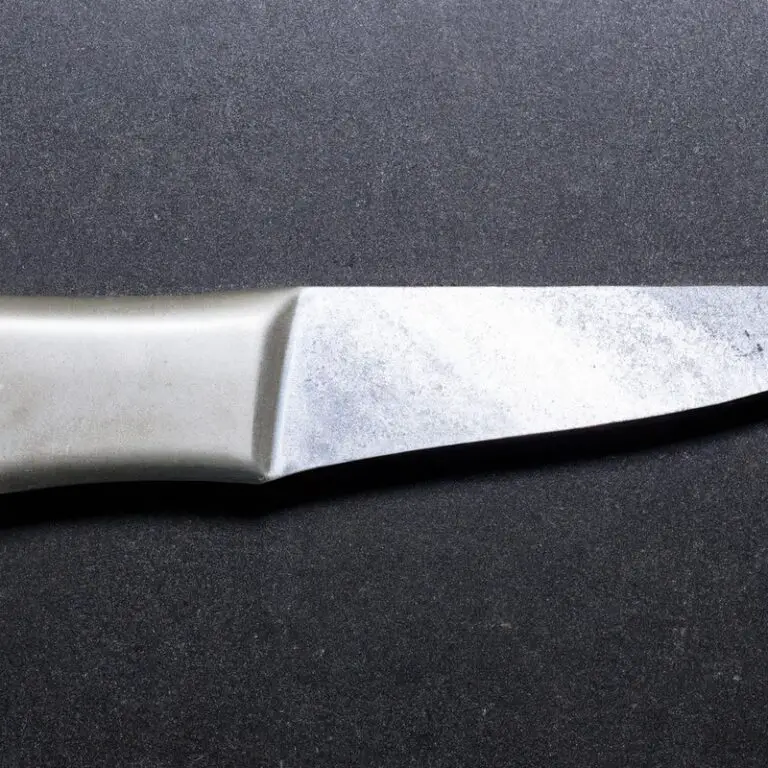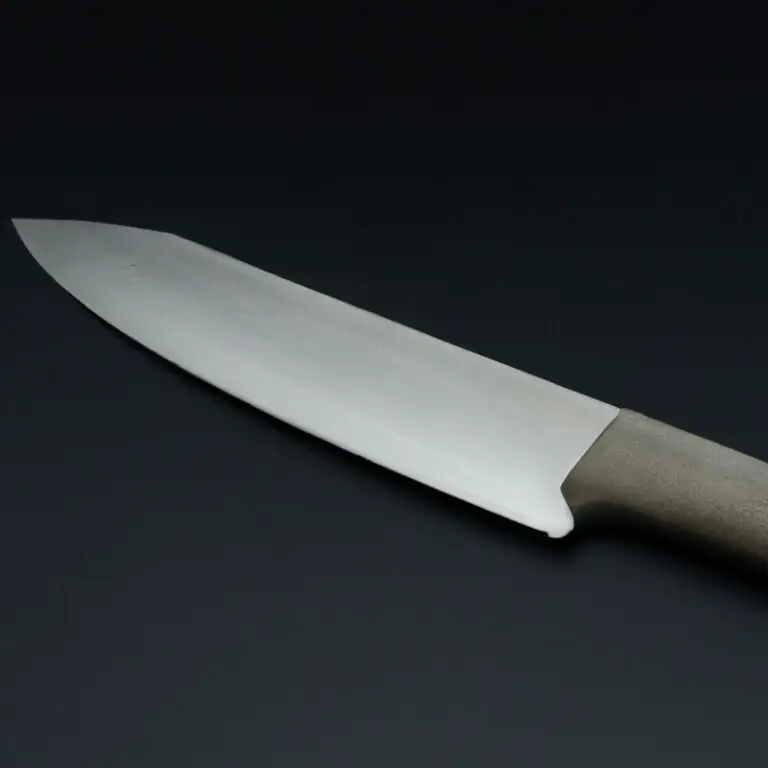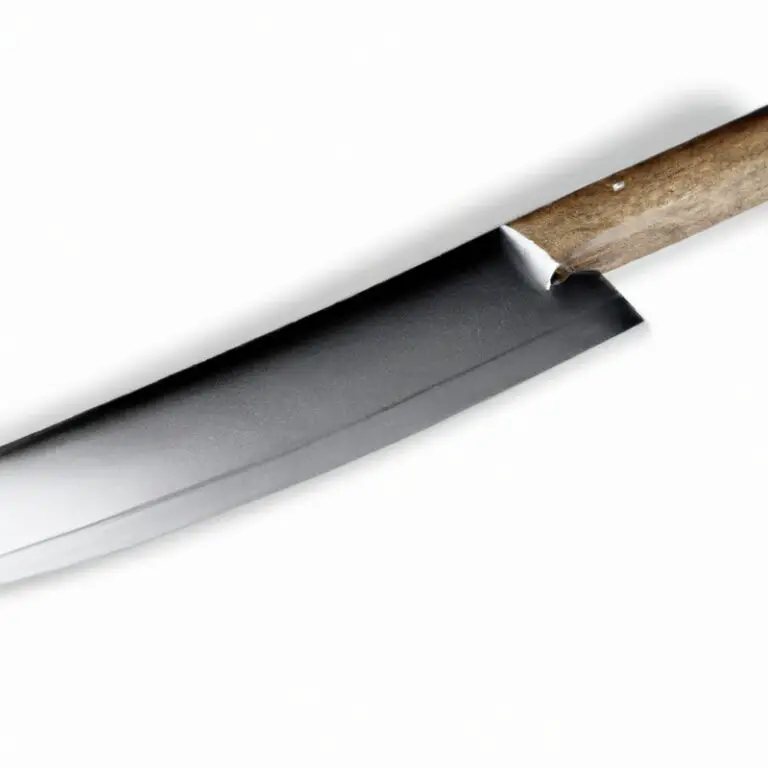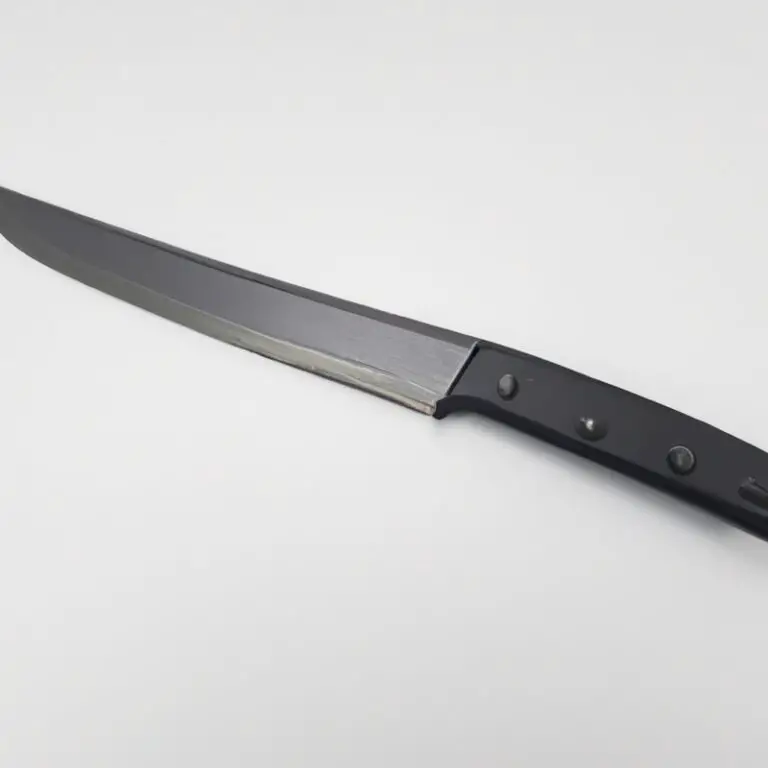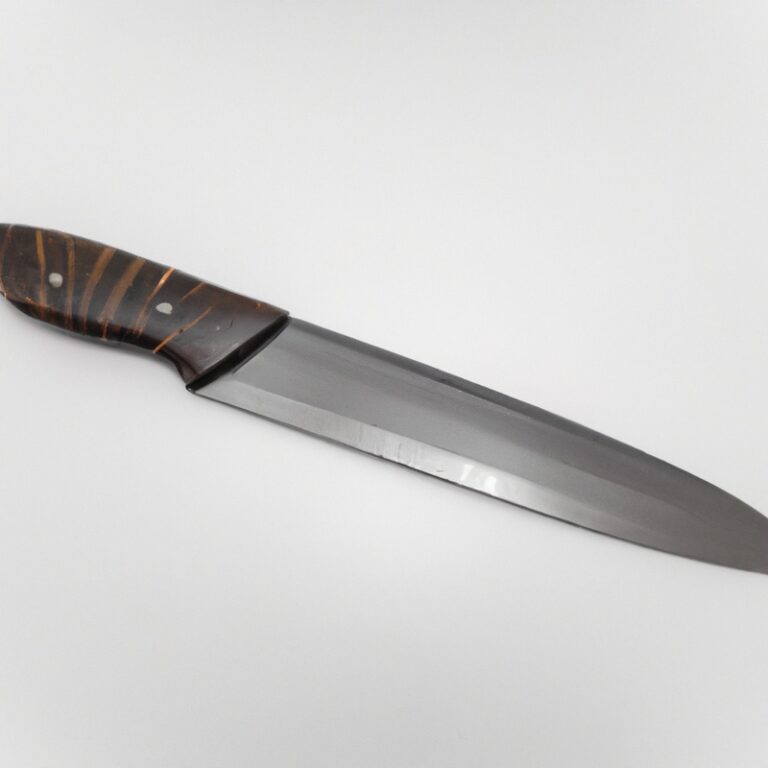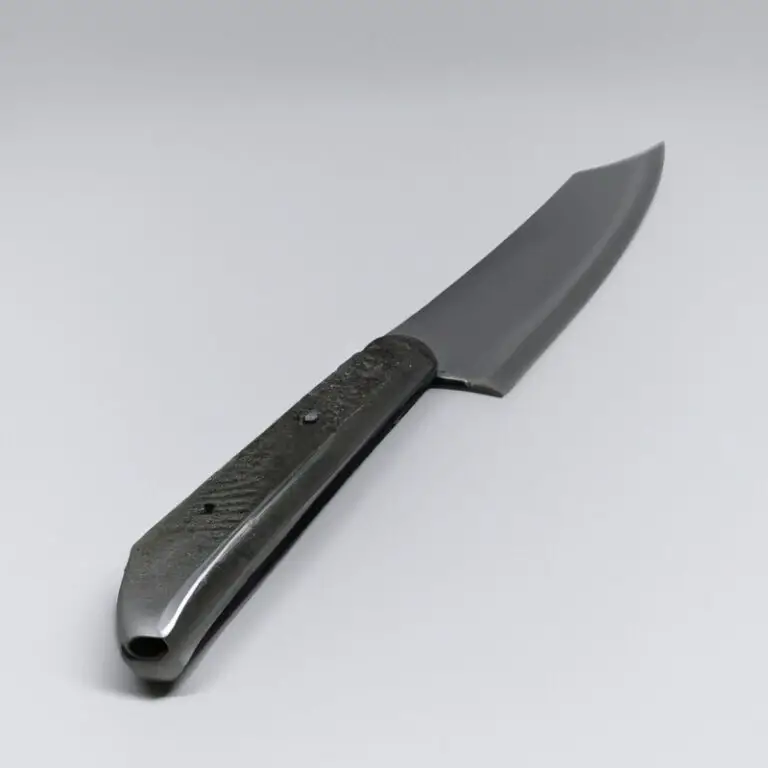What Are The Essential Features To Consider When Choosing Whetstones For Gyuto Knives? Sharpen Like a Pro
Key Takeaways:
- Choose a whetstone with a grit level that matches the task for your Gyuto knife.
- Consider the size and weight of the whetstone to ensure comfortable and effective sharpening.
- Look for a whetstone with a durable and non-slip surface to guarantee a safe and efficient sharpening experience.
- Invest in high-quality whetstones to maintain the sharpness and longevity of your Gyuto knife.
Are you tired of your Gyuto knife losing its sharpness after every use? Well, you may be using the wrong whetstone.
In this beginner’s guide, we’ll explore the essential features you need to consider when selecting an appropriate whetstone for your Gyuto knife.
From grit size to natural versus synthetic materials, we’ll cover everything you need to know to achieve that razor-sharp edge. With practical tips, advice on avoiding common mistakes, and techniques for proper maintenance and storage, you’ll be on your way to becoming a whetstone expert in no time.
| Feature | Description |
|---|---|
| Material | Whetstones can be made of various materials, including natural stones like Novaculite and synthetic stones like Silicon Carbide. |
| Grit | Whetstones have different grit levels, ranging from coarse to fine. The grit level determines how much material the stone will remove and how smooth the resulting edge will be. |
| Size | Whetstones come in different sizes, ranging from small handheld stones to large bench stones. The size chosen will depend on the size of the knife being sharpened. |
| Shape | Whetstones can be flat or have a curve or angle to match the knife being sharpened. Some stones have multiple angles or shapes for versatility. |
| Compatibility | Some whetstones are designed for specific types of knives or steel, so it’s important to choose a stone that is compatible with the Gyuto knife being sharpened. |
| Price | Whetstones can range in price from less than $10 to over $100, depending on the material, grit, and size. It’s important to consider budget when choosing a whetstone. |
Understanding the fundamentals of whetstones for Gyuto knives: A beginner’s guide
Understanding the fundamentals of whetstones for Gyuto knives is essential for beginners. Whetstones are available in two types – oil and water – with different grit sizes and are made of either natural or synthetic materials.
The grit size determines the coarseness of the whetstone, with lower numbers indicating coarser surfaces.
The type of whetstone and grit size used depends on the condition and sharpness of the blade. Natural whetstones are more expensive and require more maintenance but are known to provide better results than synthetic ones.
Synthetic whetstones are not as expensive as natural ones and are easy to care for but provide less consistent results.
Correct technique is essential when using a whetstone to sharpen your Gyuto knife. Use a consistent angle and apply the correct amount of pressure while sharpening.
Honing rods and strops also help to maintain the sharpness of the blade.
Choosing the right size and shape of whetstone depends on your personal preferences and budget. Investing in expensive whetstones may not always be necessary, as properly maintained and regularly used lower-end whetstones can produce excellent results.
Lastly, proper care and storage of whetstones are necessary for optimal performance.
Clean and dry the whetstones after use and store them in a dry place to prevent cracking and damage to the surface.
The significance of grit size in selecting the right whetstone for your Gyuto knife
The grit size of a whetstone plays a crucial role in selecting the right one for your Gyuto knife. It determines how much material will be removed from the blade and the sharpening speed.
A lower grit number (1000 or less) removes more metal and is suitable for repairing damaged or dull blades.
A higher grit number (3000 or more) removes less metal and is ideal for honing and polishing the blade to achieve a razor-sharp edge. For most Gyuto knives, a combination whetstone with two different grit sizes, such as 1000/6000, is a good choice.
Start with the lower grit to establish the bevel angle and remove any nicks, then move to the higher grit for honing and polishing.
Choosing the right grit size ensures that your Gyuto knife will have a sharp, long-lasting edge.
Oil versus water whetstones: Which one is better suited for your Gyuto knife?
Oil and water whetstones both have their advantages and disadvantages when it comes to sharpening a Gyuto knife. Oil stones are made from natural materials and require oil to lubricate the blade during use.
This makes them more durable and long-lasting than water stones.
On the other hand, water stones are made from synthetic materials and require water for lubrication. They are known for their fast-cutting ability and ability to produce a sharp edge quickly.
Ultimately, the choice between oil and water stones depends on personal preference and the type of blade you’re sharpening.
If you’re looking for a long-lasting stone that provides a consistent edge, oil stones are the better option. If you want a sharper edge more quickly, water stones are the way to go.
Additionally, it’s important to note that oil stones require more maintenance (regular cleaning and oiling) than water stones.
The importance of selecting the right material for your Gyuto whetstone: Natural versus synthetic
The material of your Gyuto whetstone plays a crucial role in achieving the desired sharpness for your knife. Natural whetstones, usually made from various types of rocks, offer a unique and organic sharpening experience but require more maintenance and can be expensive.
On the other hand, synthetic whetstones are more consistent, affordable and are designed to be low-maintenance, making them perfect for beginners.
When deciding between natural and synthetic, consider your skill level, budget, and maintenance needs to select the best option for your Gyuto knife.
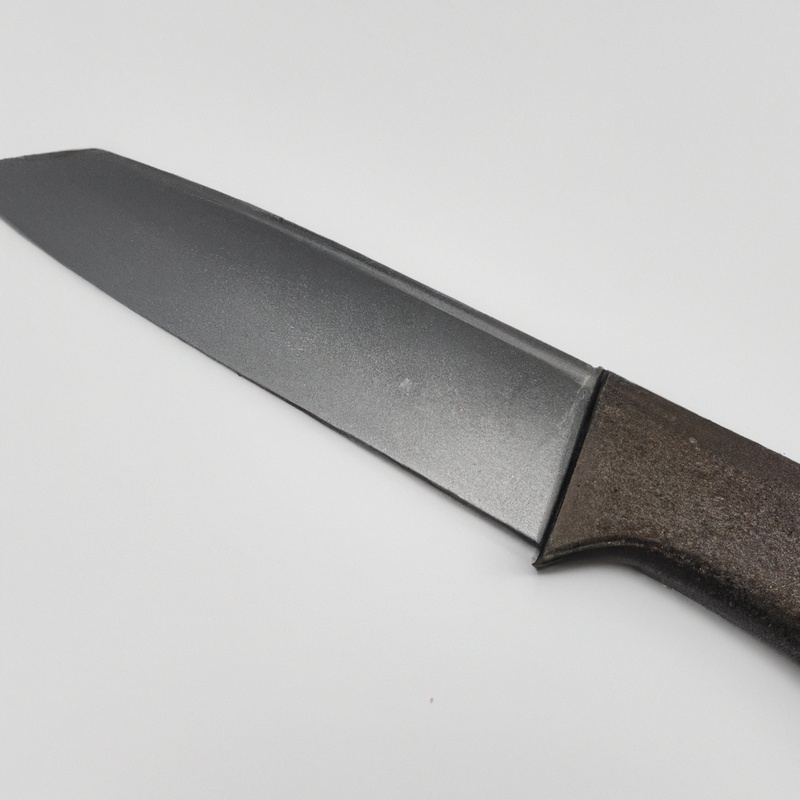
How to achieve a razor-sharp edge: The right technique for using a whetstone on your Gyuto knife
To achieve a razor-sharp edge, start by soaking the whetstone in water for about 10 minutes. Next, position the whetstone on a flat surface and hold the knife at a 20-degree angle.
Begin with the coarsest grit and move the blade in a circular motion across the stone, ensuring even strokes on both sides of the blade.
Repeat with the finer grits until you reach a desirable sharpness. Remember to frequently rinse the blade and stone with water.
It’s best to finish with a honing rod or strop to further refine the edge.
With consistent practice, you’ll quickly master the technique and enjoy a sharper and more efficient Gyuto knife.
The role of honing rods and strops in maintaining the sharpness of your Gyuto knife
Aside from whetstones, honing rods and strops also play a crucial role in maintaining the sharpness of your Gyuto knife. While whetstones remove metal from the blade to sharpen it, honing rods and strops realign and straighten the blade’s edge, creating a smoother and sharper cutting surface.
Honing rods are usually made of steel or ceramic, while strops use leather or other similar materials.
Using honing rods and strops regularly can extend the lifespan of your Gyuto knife’s edge, ensuring optimal performance every time.
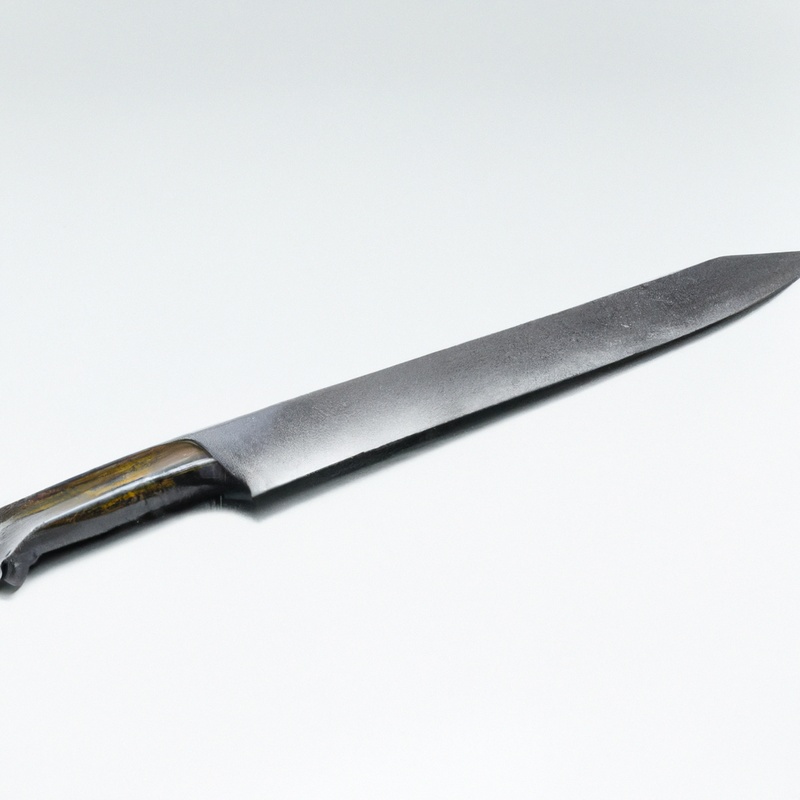
Practical tips for choosing the right size and shape of whetstone for your Gyuto knife
When selecting the size and shape of your whetstone for your Gyuto knife, consider the blade’s length and curvature. The stone’s length should be at least as long as your blade’s longest point, and the curve should match that of the knife’s edge.
A wider stone will allow for a more even sharpening process, while a narrow stone provides better precision for critical spots.
Additionally, a thicker stone will last longer but may require more effort. A thinner stone will wear out faster but is easier to use.
Keep in mind that a smaller stone can be more portable, but a larger stone provides more stability.
Choose a size and shape that fits your needs and preferences.
Time versus budget: Finding the right balance when investing in whetstones for your Gyuto knife
When deciding between invest in a quality whetstone or a cheaper one, it’s important to find a balance between time and budget. A higher-quality whetstone will require less time to sharpen your Gyuto knife and will last longer, ultimately saving you money in the long run.
However, a cheaper whetstone can save you money initially but may require more frequent replacements and take more time to achieve a sharp edge, resulting in a higher cost of your time.
Consider your priorities and allocate your budget accordingly. Lower-grit stones will remove material faster, while higher-grit stones finish the edge.
It’s up to you to decide if you want speed or a refined edge.
Additionally, practice and technique play a significant role in sharpening your knife, so investing in an expensive high-grit stone may be unnecessary if you are still working on your technique. Ultimately, finding a balance between time and budget will result in a sharp, well-maintained Gyuto knife that fits your needs and budget.
Avoiding common mistakes when selecting and using whetstones for your Gyuto knife
When it comes to selecting and using whetstones for your Gyuto knife, there are a few common mistakes that you should avoid to ensure optimal performance and longevity of your knife.
- Choosing the wrong grit size: Using a whetstone with too coarse or too fine grit can damage your knife or fail to achieve the desired level of sharpness. Follow the manufacturer’s recommendations or consult with experts to select the right grit size for your Gyuto knife.
- Using the wrong type of whetstone: Using oil-based whetstones on water-based ones and vice versa can harm the whetstone and your knife. Determine which type of whetstone is suitable for your Gyuto knife and stick with it.
- Neglecting proper technique: Improper use of whetstones can result in inconsistent or ineffective sharpening, leading to damage or reduced performance of your Gyuto knife. Learn the proper technique and practice it regularly to get the best results.
- Inadequate maintenance: Neglecting to clean and store your whetstones appropriately can compromise their performance and quality over time. Always clean and dry your whetstones after use and store them in a safe and dry place.
By avoiding these common mistakes, you can achieve optimal results when selecting and using whetstones for your Gyuto knife, prolong their lifespan, and maintain their sharpness and performance.
Taking care of your whetstones: Proper maintenance and storage for optimal performance
Proper maintenance and storage of your whetstones are crucial for optimal performance. Rinse your whetstone with clean water after every use, wipe it dry, and allow it to air dry completely before storing it.
Avoid using soap or other cleaning agents as they can clog the pores of the stone.
Also, ensure to level your whetstone regularly with a leveling stone or flattening plate. Store your whetstones in a cool and dry place, away from direct sunlight or heat.
Additionally, avoid stacking them or placing heavy items on top of them to prevent damage.
Proper maintenance and storage of your whetstones can significantly prolong their lifespan and ensure they perform optimally for many years to come.
Final Verdict
Selecting the right whetstone for your Gyuto knife can greatly impact the sharpness and longevity of your blade. By understanding the significance of grit size, material, and technique, you can confidently choose a whetstone that meets your specific needs.
Remember to consider factors such as size, shape, and budget when making your selection, and avoid common mistakes like using the wrong type of whetstone or failing to properly maintain it.
By taking the time to invest in a good whetstone and mastering its use, you can enjoy a razor-sharp edge on your Gyuto knife for years to come. As you navigate the world of whetstones, trust in the knowledge and expertise you have gained and take pride in the precision and performance of your sharpened blades.

